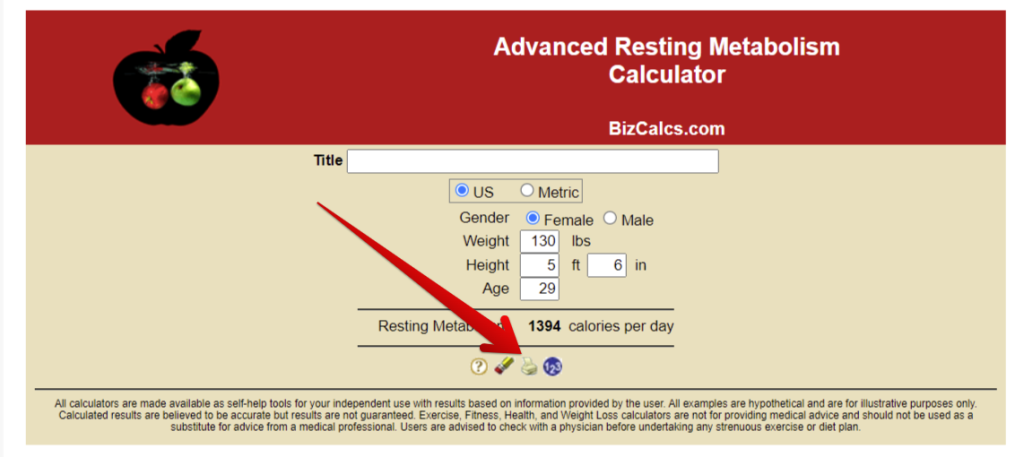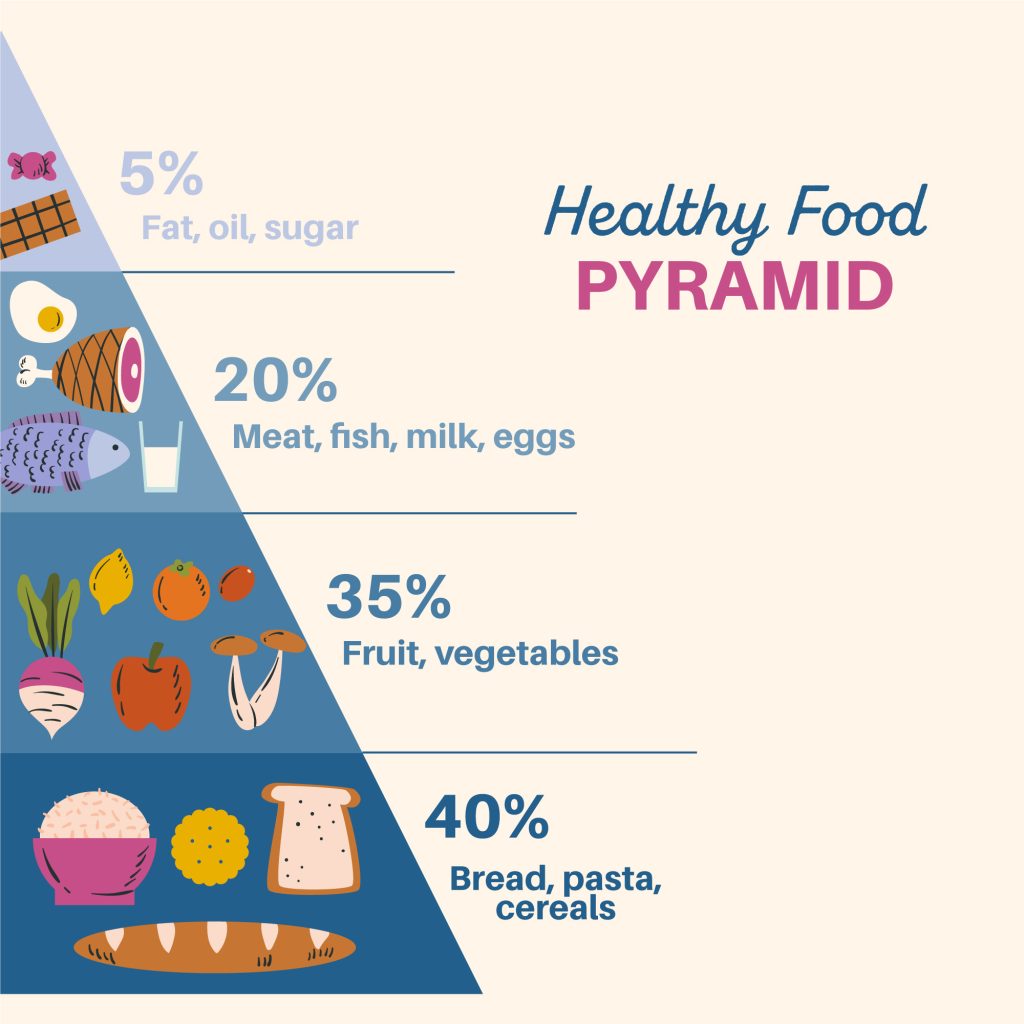According to a study from the National Institutes of Health (NIH) ARM is responsible for a significant 60-70% of your daily calorie expenditure. This highlights the importance of ARM in weight management. Your Advanced Resting Metabolic Rate (ARM), also known as Basal Metabolic Rate (BMR), is the minimum energy your body burns while at rest to sustain vital functions like breathing, circulation, and cell production.
Furthermore, a 2023 study published in Cell Metabolism suggests individuals with higher levels of brown adipose tissue (BAT) exhibit a noticeably increased metabolic rate, even at rest. This highlights the potential influence of factors beyond muscle mass on ARM.
Knowing your ARM empowers you to set realistic goals for weight management and overall health. Take control of your well-being by using our Advanced Resting Metabolism Calculator to determine your individual energy needs. Explore our Less Mass Resting Metabolism Calculator for further guidance on optimizing your health!
What is an Advanced Resting Metabolism Calculator?
An Advanced Resting Metabolism Calculator is a tool designed to estimate the number of calories your body needs at rest to maintain basic physiological functions such as breathing, circulation, and cell production. This is known as your Basal Metabolic Rate (BMR). The BMR is then multiplied by an activity factor to determine your Total Daily Energy Expenditure (TDEE), which represents the total number of calories you burn in a day when activity levels are taken into account.
The formula used for the calculation is:
TDEE=655+(4.35×Weight lbs)+(4.7×Height inches)−(4.7×Age)
For example:
TDEE=655+(4.35×130lbs)+(4.7×66 in)−(4.7×29)
TDEE=655+565.5+310.2−136.3
TDEE=1394 calories/day
The variations of resting metabolic rate in adults from a public health perspective sheds light on the importance of understanding metabolic rate for overall health and well-being. For exploring more, check out our Simple Resting Metabolism guidance!
How To Use Our Advanced Resting Metabolism Calculator?
- First, choose between US and Metric units based on your preference. If you are more familiar with the US system, select US. If you prefer the Metric system, select Metrics.
- Next, input your gender by selecting either Male or Female from the available options. The calculator needs this information to make an accurate estimation of your RMR.
- Then, enter your current age in years. Age is a crucial factor in determining metabolism as it tends to decrease with age.
- After that, input your weight. You can choose to enter your weight in either kilograms or pounds, depending on the unit you are most comfortable with.
- Now, specify your height. Input your height in either centimeters or feet and inches, depending on the unit you prefer.
- Once you have entered all the required information, click on the ‘Calculate’ button. The calculator will then process your data and provide you with an estimate of your resting metabolic rate.
- After clicking ‘Calculate’, the calculator will display your estimated RMR. This number represents the number of calories your body needs to maintain its current weight while at rest.
After obtaining your results, you have the option to print them along with other relevant information for your reference.
To get a more accurate daily calorie expenditure, you can multiply your RMR by an activity factor based on your daily activities. This will give you an estimate of the total calories you burn in a day, including both your RMR and the calories burned through daily activities and exercise.
By following these steps, you can effectively use our Advanced Resting Metabolism Calculator to estimate your resting metabolic rate and better understand your daily calorie needs.
Daily Calorie Needs Based on Age Groups and Activity Levels
| Age Group (years) | Activity Level | Activity Factor | Daily Calorie Needs |
|---|---|---|---|
| 18-30 | Sedentary | 1.2 | 1860 calories |
| 18-30 | Lightly active | 1.375 | 2112 calories |
| 18-30 | Moderately active | 1.55 | 2325 calories |
| 18-30 | Very active | 1.725 | 2588 calories |
| 18-30 | Super active | 1.9 | 2850 calories |
| 31-50 | Sedentary | 1.2 | 1740 calories |
| 31-50 | Lightly active | 1.375 | 1995 calories |
| 31-50 | Moderately active | 1.55 | 2250 calories |
| 31-50 | Very active | 1.725 | 2490 calories |
| 31-50 | Super active | 1.9 | 2700 calories |
| 51-70 | Sedentary | 1.2 | 1620 calories |
| 51-70 | Lightly active | 1.375 | 1863 calories |
| 51-70 | Moderately active | 1.55 | 2108 calories |
| 51-70 | Very active | 1.725 | 2325 calories |
| 51-70 | Super active | 1.9 | 2550 calories |
| 70 and above | Sedentary | 1.2 | 1500 calories |
| 70 and above | Lightly active | 1.375 | 1650 calories |
| 70 and above | Moderately active | 1.55 | 1850 calories |
| 70 and above | Very active | 1.725 | 2156 calories |
| 70 and above | Super active | 1.9 | 2375 calories |
Factors Influencing Advanced Resting Metabolism (BMR)
Advanced resting metabolism, also known as Basal Metabolic Rate (BMR), is influenced by a variety of factors. Understanding these factors can help individuals make informed decisions about their calorie intake and overall health. Here are the key factors that influence advanced resting metabolism:
- Body Composition
-
- Muscle Mass: Muscle tissue is metabolically active, leading to a higher BMR in individuals with more muscle mass.
- Fat Mass: Fat tissue is less metabolically active, resulting in a lower BMR in individuals with higher body fat percentages.
- Age
-
- BMR typically decreases with age due to muscle mass loss and fat gain.
- Gender
-
- Men generally have a higher BMR than women due to differences in body composition and muscle mass.
- Body Size
-
- Weight: Heavier individuals generally have a higher BMR due to more body mass to maintain.
- Height: Taller individuals tend to have a higher BMR because of a larger surface area.
- Hormonal Factors
-
- Thyroid Hormones: Thyroid hormones regulate metabolism; abnormal function can affect BMR.
- Stress Hormones: Chronic stress and elevated cortisol levels can decrease BMR.
- Nutritional Status
-
- Caloric Intake: Prolonged calorie restriction or fasting can decrease BMR.
- Nutrient Deficiencies: Lack of essential nutrients can affect thyroid function and subsequently, BMR.
- Physical Activity Level: Regular physical activity can increase BMR by building muscle and improving metabolic efficiency.
- Medical Conditions & Medications
-
- Certain medical conditions and medications can influence BMR.
- Environmental Factors
-
- Temperature: Extreme temperatures can increase BMR as the body works to maintain its core temperature.
- Altitude: Higher altitudes can increase BMR due to the body’s effort to maintain oxygen levels.
Significance of Knowing Your Resting Metabolic Rate (RMR)
The Advanced Resting Metabolism Calculator is particularly useful for:
- Individuals Planning Weight Management: Understanding your Total Daily Energy Expenditure (TDEE) can help you tailor your calorie intake to achieve specific weight goals, whether it’s weight loss, maintenance, or muscle gain.
- Fitness Enthusiasts and Athletes: Athletes and regular gym-goers can utilize the calculator to optimize their nutrition plans and ensure they are consuming enough calories to support their activity levels and muscle recovery.
- Health and Nutrition Professionals: Dietitians, nutritionists, and healthcare providers can use this tool to provide personalized dietary recommendations to their clients based on accurate estimations of their resting metabolism.
- Those Seeking to Improve Overall Health: Even if weight management is not a primary concern, understanding your resting metabolism can provide valuable insights into your overall energy needs, helping you make informed decisions about your diet and lifestyle.
- People Undergoing Metabolic Changes: Individuals undergoing significant metabolic changes due to aging, medical conditions, or hormonal shifts can benefit from understanding their resting metabolism to adjust their nutritional intake accordingly.
- Anyone Curious About Their Metabolic Rate: If you are simply curious about how many calories your body needs at rest, the calculator can provide a valuable estimate and serve as a starting point for understanding your metabolism.
Bottom Line
Understanding your Resting Metabolic Rate (RMR) is vital for weight management and health. Use our Advanced Resting Metabolism Calculator to estimate your daily calorie needs by considering factors like gender, weight, height, age, and activity level to determine your Total Daily Energy Expenditure (TDEE). This information enables you to set realistic weight goals, optimize nutrition, and make informed lifestyle choices. Whether you’re an athlete, a health professional, or simply curious about your metabolic rate, our calculator offers valuable insights to guide your health and fitness journey.



THIS DOSENT WORK!!!!!!!!!!!!!!!!!!!!!!!!!!!!!!!!!!!!!!!
What is not working. Which browser and type of computer (Mac or PC) are you using?
I think this works great!! I was very happy to get my numbers so quickly and easily. Thank you!!
I really liked this-it is easy to use and very helpful.
This isn’t accurate it depends on your body fat percentage too, because muscle burns more calories than fat does. Find a more advanced one, or go to your doctor to find out.
I belive this is inaccurate choose a different site
This RMR calculation agrees with a couple of other on the net. In order to figure out how many calories are needed to maintain your weight, a multiple is typically used.
1.2 Sedentary
1.375 Lightly Active
1.55 Moderately
1.725 Very Active days a week
1.9 Extremely Active